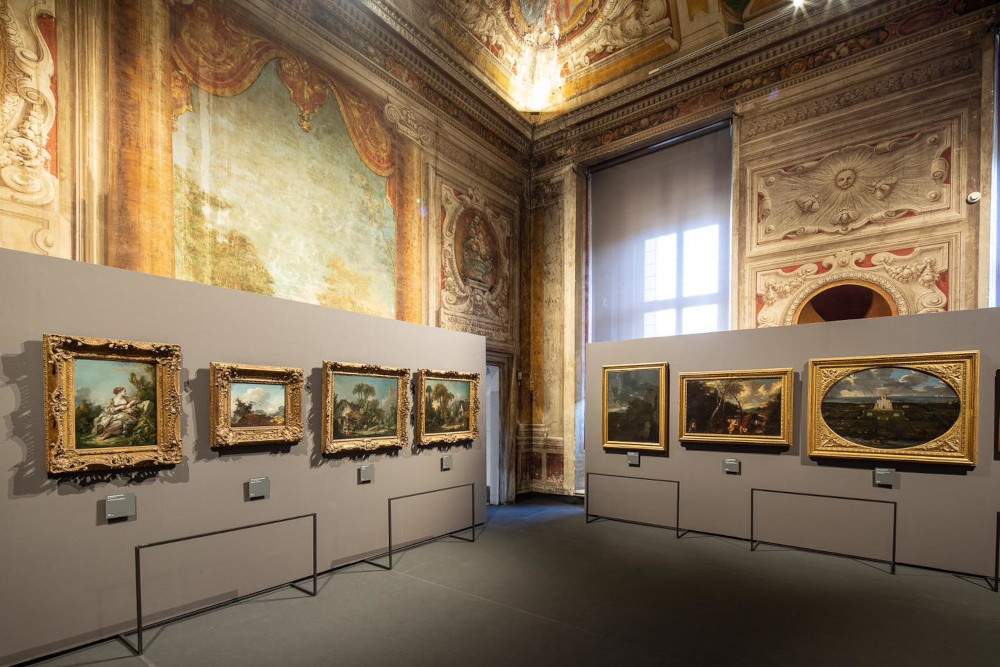Until January 31, 2024, the National Galleries of Ancient Art present at Palazzo Barberini the exhibition focus Di natura e d’invenzione. Landscapes, Views and Capriccios from the Deposits of the National Galleries of Ancient Art, curated by Luigi Gallo with Paola Nicita and Yuri Primarosa.
“I thought of a Christmas gift for the museum’s public,” said Luigi Gallo, director of the Galleria Nazionale delle Marche in Urbino and of the Marche Regional Museums Directorate and, since Nov. 15, acting director of the Gallerie Nazionali di Arte Antica. “This is an opportunity to enhance and relate at the same time a room that is not always accessible and a selection of works that do not currently belong to the permanent exhibition, precious masterpieces that will enrich the visit path for the public of the Galleries. I chose the theme of landscape because it is close to my scholarly interests and to offer an eternal spring in the days of winter. The enhancement of the repositories, which I consider the hidden treasure of every museum, is one of the cornerstones of my work in the Marche region-until May 5 it is possible to visit an exhibition The Other Collection National Gallery of the Marche-and which I wanted to repropose here as well.”
Thus on display in the Hall of Landscapes, on the main floor of Palazzo Barberini, are fourteen paintings coming partly from the storage rooms and partly from the Museo Laboratorio delle Gallerie, the picture gallery on the second floor of Palazzo Barberini where works usually destined for research and teaching projects for scholars, specialists and art history majors, and only rarely accessible to the public, are kept.
Different types of landscapes are represented in the exhibition, ranging from ideal compositions to views, from rural evocations to capriccios with ancient ruins. These range from paintings by Nicolas Poussin, a master of French seventeenth-century painting, to the so-called Master of the Birch Tree, identified in Gaspard Dughet, to the Flemish Jan Frans van Bloemen, known as the Horizon, in which nature hosts mythological and sacred events offering extraordinary luministic effects. Then we move on to exact views, such as the work of Pietro da Cortona, which constitutes one of the first chamber paintings depicting an existing place, and of the German Jacob Philipp Hackert, the greatest exponent of Enlightenment analytical landscape painting: the masters, a century apart, masterfully depict the unmistakable light of the Roman landscape. We can then admire architectural capriccios and pastoral scenes, genres that enjoyed great fortune in Italy and France, as evidenced by the canvases of Andrea Locatelli and Giovanni Paolo Pannini, and by the most celebrated painters of the court of Versailles in the 18th century, such as François Boucher, Jean-Honoré Fragonard and Hubert Robert, who stayed in the papal capital as boardnaires of the French Academy. In the paintings on display, Rome and its countryside become inspirational cues for depicting a visionary nature, steeped in pre-Romantic sensibility, where the actions of the characters and the architecture provide a counterpoint to the timelessness of the classical world.
 |
| At Palazzo Barberini a focus on landscape paintings from the storerooms of the National Galleries of Ancient Art |
Warning: the translation into English of the original Italian article was created using automatic tools. We undertake to review all articles, but we do not guarantee the total absence of inaccuracies in the translation due to the program. You can find the original by clicking on the ITA button. If you find any mistake,please contact us.